
For production designer Nathan Crowley, whose impressive list of credits includes The Dark Knight, The Greatest Showman, and First Man, creating director Paul King’s deliciously appetizing Wonka musical was an exploration of “whimsical, nostalgic, and romantic” visuals inspired by Roald Dahl’s book Charlie and the Chocolate Factory. “I’m used to doing practical films, and with Wonka, we had to find the realism of Roald Dhal and what that looked like. Our realism is his fantasy,” Crowley tells The Credits.
Crowley first considered the fictional town in which Willy Wonka, splendidly portrayed by actor Timothée Chalamet, comes ashore to sell his delicious chocolates. “The city is sort of the best of Europe, and we are trying to take parts of it and mix them together without them being noticed,” says the production designer. “Good design goes semi-unnoticed, and it just plays with the story and the characters live in that space without question.”
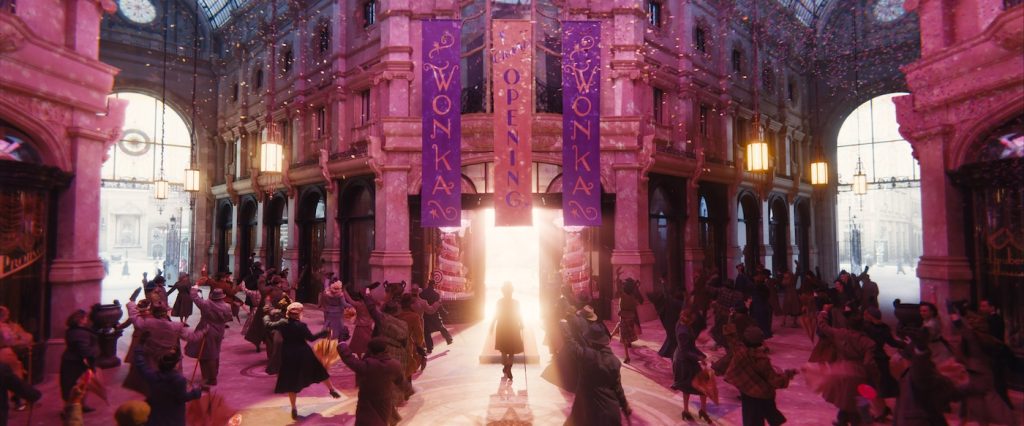
Warner Bros. Studios Leavesden was home to the 21-week production where dozens of sets spanned multiple soundstages, a backlot, and an airport hangar, along with filming at ten practical locations, including St. Paul’s Cathedral, Sutton Bridge, and Lyme Regis’ harbor. Crowley intertwined architectural styles from France, Germany, Belgium, Netherlands, Czechia, and Switzerland to build the massive town.
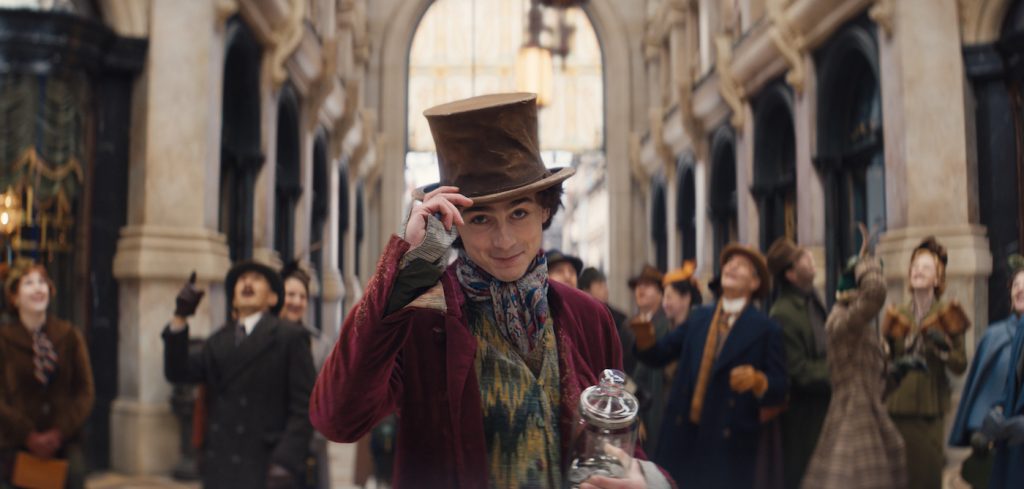
At its center is a 900m x 900m (2952ft x 2952ft) square that took eight months to complete. Twelve shops, two restaurants, two outdoor dining areas, a food market, and a florist fill out the square, which features an enchanting fountain. A labyrinth of cobblestone streets leads to the docks, Mrs. Scrubitt’s (Olivia Coleman) laundry warehouse where Willy is forced to work off his debt, the cathedral (inspired by St. Paul’s and Prague churches), and the Galeries Gourmet, home to the famed chocolate shops of Slugworth (Paterson Joseph), Prodnose (Matt Lucas), and Fickelgruber (Mathew Baynton) reside.
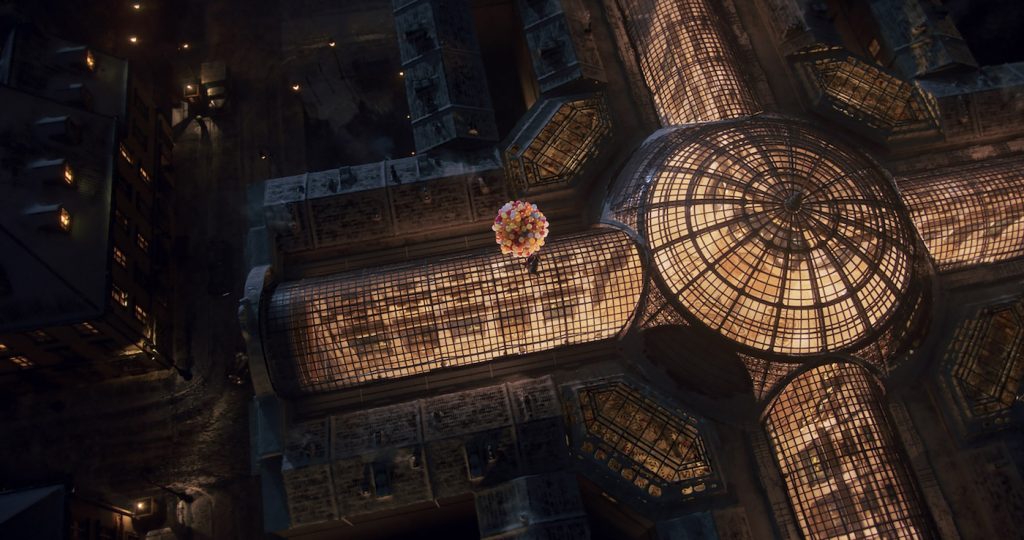
Crowley built the town in sections as a way to influence the lighting and visual effects. “You want to make it the right size cinematically for the camera lens,” he says. “If you have a real town square, it might be too big, and you might not be able to understand all the moments. Fortunately, Warner Bros. was willing to let us build the whole town square and the Galeries Gourmet, so I could really use every piece of stylization and architecture that I wanted in a much more creative way.”
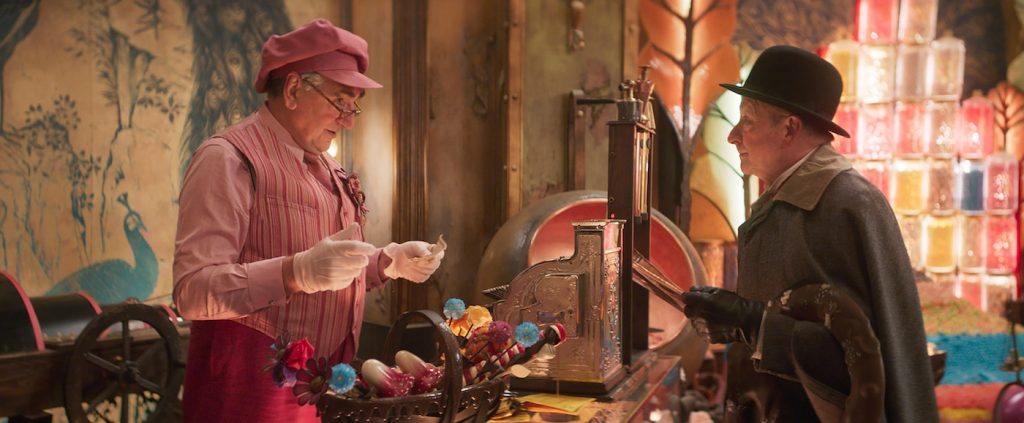
Blues, yellows, and greens were infused into the chocolatier shops of Slugworth, Prodnose, and Fickelgruber, whose signature colors are also part of their costume design, while other Galeries Gourmet shops had windows filled with delectable treats and drinks. Willy’s chocolate shop was a separate stage built and inspired by his childhood memories. “There’s a backstory that he grew up with his mother on a canal boat on a river with a beautiful weeping willow tree,” notes Crowley. “His mother created this safe, wonderful space, and Willy’s store is a reflection of this childhood memory that he holds dearly.”
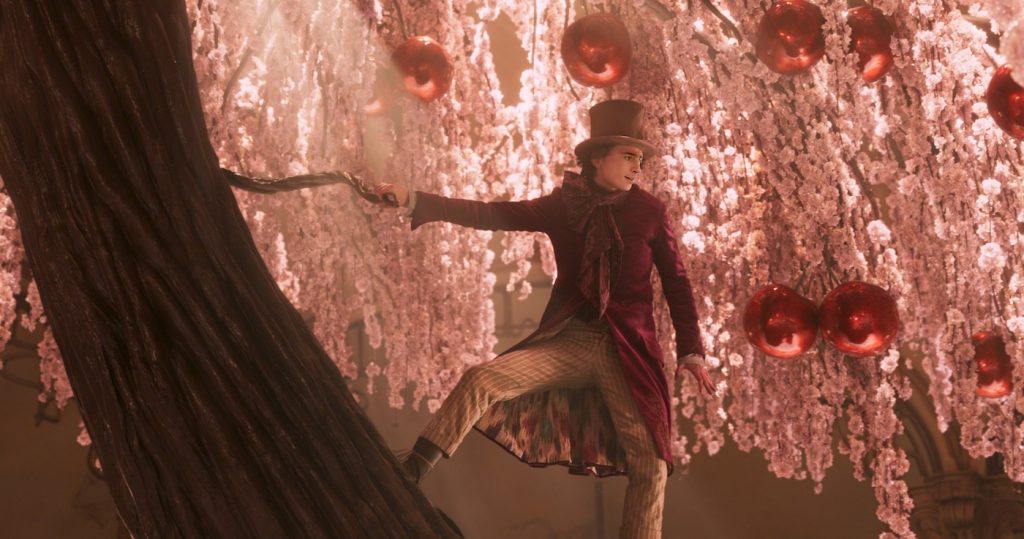
Crowley started by designing a curved cherry blossom chocolate tree, which is reached from a delightful pink walkway. Below is a mouthwatering ground made of chocolate and a garden of edible roses, flowers, mushrooms, and lollipops. Creamy blue theatrical waves wrap the tree while a chocolate barge moves along a candy river that features a boat reflecting his childhood. “We couldn’t do the chocolate river yet because it’s his first chocolate shop. We wanted that to be part of the factory,” notes the production designer. Topping it off, the entire tree rotates in a sky of pink cotton candy clouds. “Visual effects got these giant turntables to rotate the tree in this corkscrew motion that gave us some movement for the song number,” adds Crowley.
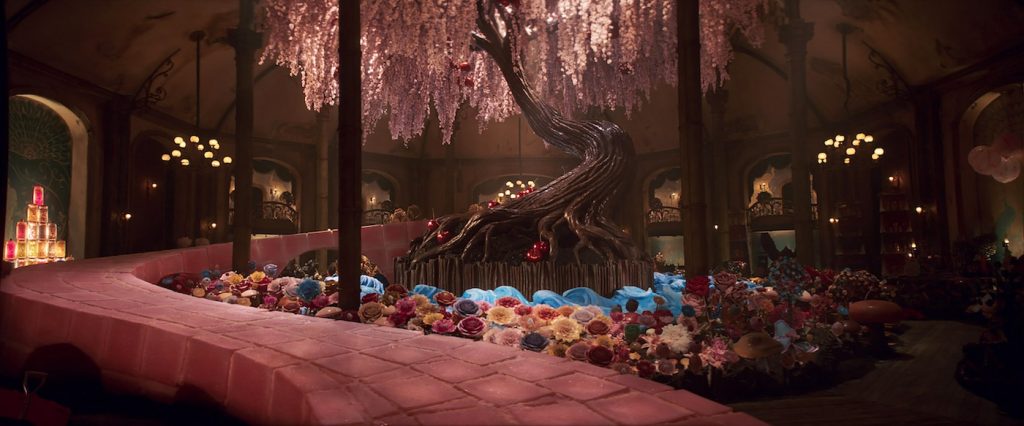
Looking back on the project, Crowley says, “You can do a film purely with visual effects, but you lose the journey of creativity in building a set and how you can change it like a piece of sculpture. I love building sets because of the process of building them and the way they change. You don’t draw an illustration and build that illustration. You art direct it, and, with the director, it becomes more than the idea. With Wonka, it’s successful at being whimsical and joyous. And I think we can all do with a bit of that right now.”
Wonka arrives is in theaters now.
This article was first published on The Credits